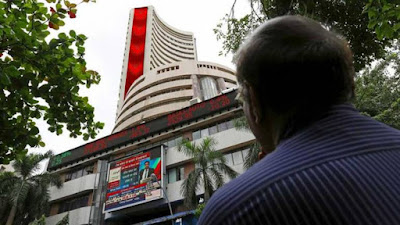The GST Council will be meeting on September 20 and the outcome will be important for giving direction to the economy.
After an uneventful session, market once again succumbed to selling pressure on September 19, with the Nifty50 decisively breaching the crucial 10,800 levels.
Banking & financials, metal, technology and pharma stocks pulled benchmark indices lower. The broader markets also traded in line with frontliners as the Nifty Midcap and Smallcap indices fell 1.6 percent and 1.5 percent respectively on Thursday.
The BSE Sensex was down 470.41 points or 1.29 percent at 36,093.47 and the Nifty50 fell 135.90 points or 1.25 percent to 10,704.80.
Fed Delivers Rate Cut But Holds Further Rate Cut
As expected, the US Federal Reserve lowered its overnight lending rate by 25 basis points to counter recession concerns. This was the second cut since 2008 and also the second in the year.
The current Fed funds rate range is 1.75-2 percent. The Central bank also cut interest it pays on excess reserves by 30 bps.
However, what stood out was that Fed officials were divided about the decision and over the need for future cuts.
Only seven of the 17 members of the Federal Reserve Open Markets Committee, voted in favour of September 18's cut. Two members wanted to hold the rate steady, while one wanted to cut further.
"This 25-basis-point rate cut and not much changed in the statement or in the economic projects was on expected line. However, the divided nature of the FOMC seems to be causing a concern," Sutapa Biswas of Stewart & Mackertich Wealth Management said.
The Fed sees GDP growth at 2.2 percent in 2019, against 2.1 percent projected in June this year.
BOJ Keeps Rates on Hold
The Bank of Japan kept monetary policy steady on September 18 but said it would re-examine economic and price developments more thoroughly at its next policy meeting, signalling the chance of expanding stimulus as early as October.
As expected, the BOJ maintained its short-term interest rate target at -0.1 percent and a pledge to guide 10-year government bond yields under a policy dubbed yield curve control (YCC).
Announcing its decision, the central bank said in a statement that it was becoming necessary to pay "closer attention" to the chance that the economy will lose sufficient momentum to achieve the BOJ's 2 percent inflation target.
"Taking this situation into account, the BOJ will re-examine economic and price developments at its next policy meeting" when it reviews its long-term growth and price forecasts, it said. (Source: Reuters).
No Major Announcement in Cabinet Meeting
Apart from approving the blanket ban on e-cigarettes, Finance Minister Nirmala Sitharaman did not make any other major announcements in her September 18 presser. Analysts say that the lack of announcements could have spoiled the sentiment as the market closed off its day's high in the previous session.
On the domestic front, the recommendations of GST Fitment committee to not reduce rates in certain sectors has impacted sentiment; however, the final decision would be taken at the GST Council meet on September 20.
Caution Ahead of GST Council Meet
The market is eagerly awaiting the GST Council meet scheduled on September 20.
Among the slew of expectation, the street expects a GST rate for the auto sector from 28 percent to 18 percent. However, with the approval of such rate cut, government will have to forgo a substantial portion of tax, especially at a time when the tax collection is already lower than expectations.
Hence reports suggested that the government might have rule out the demand.
The auto sector has been in doldrums recently with demand dropping to almost 20-year low.
Among other expectations, the Council may cut rates on hotels, cement, steel, ceramic tiles and sanitary wares, and also could consider road map for reducing the number of slabs.
Technical View
The Nifty50 remained under pressure from word go and formed bearish candle on daily charts. The index hit a seven-month closing low, though overall it has been in a range of 10,700-11,100 levels for several sessions now.
Experts feel if the index breaks its August lows then it could move towards its crucial support 10,500 levels in coming sessions and even the Bank Nifty was showing weakness.
Source : https://www.moneycontrol. com/news/business/markets/sensex-falls-over-400-pts-nifty-near-4-week-low-here-are-5-factors-that-weighed-on-dalal-street-4453411.html
free intraday tips,
equity cash trading tips,
stock market company,
stock
cash tips, Share Marke Tips, Stock Tips, commodity trading tips, Investment Advisory
Investment & trading in securities market is
always subjected to market risks, past performance is not a guarantee of future
performance. Moneyplant Research SEBI Registration Number: INA000007924
To get more
details about share market call us on 8818886453 or visit our website https://www.moneyplantresearch.com.






